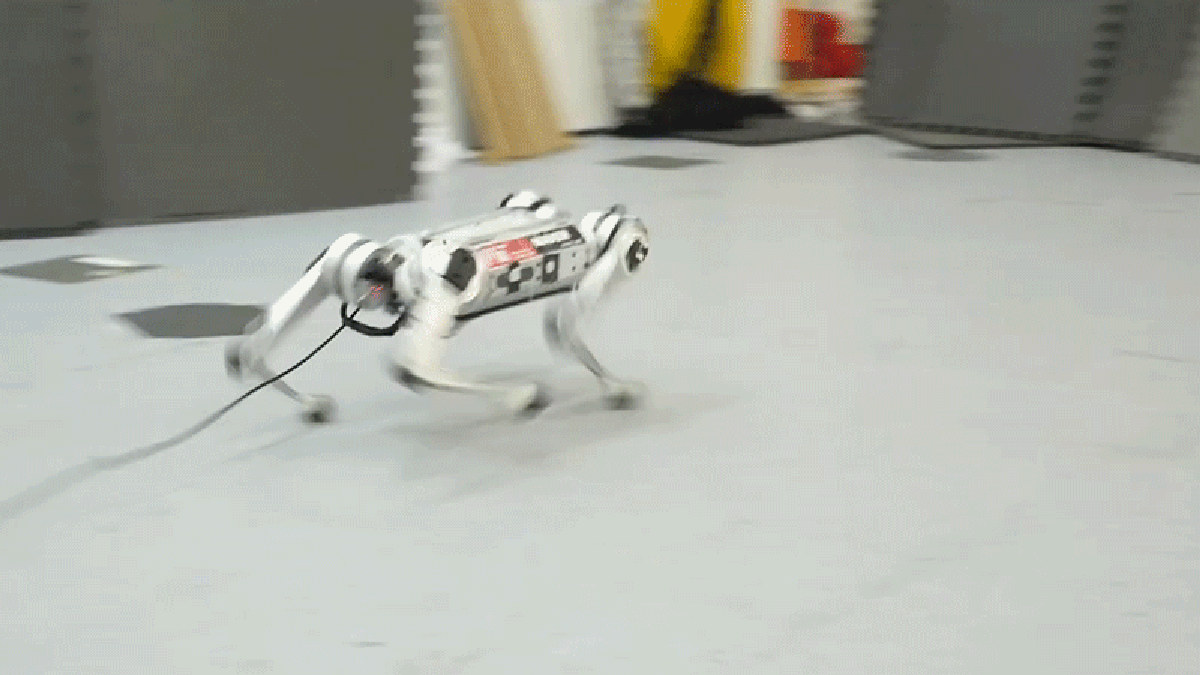
The Mini Cheetah might not necessarily be able to recognize that it’s loose gravel that’s constantly causing it to lose its footing or ice that’s making its feet slip, but by constantly monitoring its movements it can tell when it’s not walking as effectively as it could, and based on what its legs are doing, it can now adapt their movements to ensure it keeps moving forward. Those adaptations can even compensate for how the robot’s components are performing or underperforming as a result of damage or being over-stressed.
Advertisement
There’s another reason robots don’t run, and it has nothing to do with researchers worried about damaging a custom machine that potentially costs hundreds of thousands of dollars to build. Running requires a robot to push its various components—like electric motors and servos—to the limits of its operating range, at which point they can start to behave and perform different behaviors that are as hard to predict as what might happen to a robot traversing slippery ice. But the same way that the Mini Cheetah can now adapt to different terrains, it can also adapt to how its own components are functioning, which allows it to run more effectively.
It might not be the most graceful thing to watch when moving at high speeds, but the Mini Cheetah hit a new top speed of 3.9 m/s, or a little over 8.7 MPH, which is faster than the average human can run. The new approach isn’t just about teaching robots to run, however. Robot hands could be quickly taught to safely handle thousands of different objects they’ve never physically touched before, and autonomous drones could be taught how to fly in inclement weather through safe simulations instead of sending them out into the real thing to learn by trial and error.
Advertisement
